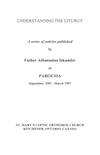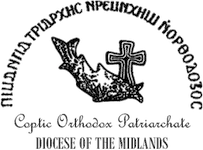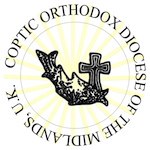
Understanding the Liturgy: Preface
A series of articles published by Hegomen Father Athanasius Iskander in PAROUSIA magazine from September 1993 – March 1997. This book explains the history of the Liturgy, rituals of the Liturgy, their origins, and their spiritual relevance. It also includes guidelines and a training manual for deacons on things they need to take care of and pay attention to before, during, and after the Liturgy.
PREFACE
In general, the word Liturgy means the corporate service of worship of the assembled Church. For example, the collection of prayers and scriptural readings that are used during the ceremony of marriage constitute the Liturgy of Holy Matrimony. Similarly, the collection of prayers, hymns and scriptural readings said on Holy Friday, constitute the Liturgy of Holy Friday. Again, the prayers, hymns and readings said during the celebration of the Eucharist constitute the Liturgy of the Eucharist. Most people use the term Liturgy to refers to the Liturgy of the Eucharist. For our purpose, we will use the word Liturgy in this sense (i.e., to mean the Liturgy of the Eucharist).
In order to understand the Liturgy, one has to do several things. First, one has to start with an old version of the Liturgy. Several aspects have to be considered: the meaning of the words, their biblical origin, the correct manner in which the rubric (rituals) should be performed. Studying the “silent prayers” of the priest also gives excellent insight into the symbolism behind the various acts performed by the priest and the deacons.
Second, one has to consult the sayings of the Fathers of the Church, as well as other ancient writers. This helps us understand the historical changes which have occurred over the years. Reading the Fathers can give meaning to many of the rubrics, many of which are not carried out properly because of lack of understanding of their meaning.
Third, one has to study the Old Testament, and more specifically the rituals used by the priests in performing the animal sacrifices. It is in these that one can find the true meaning of some of the Liturgy’s Rubrics. Many of the actions and words of the priest have an old Testament “Type” or counterpart.
Fourth, one has to meditate on the information gathered, trying to synthesize it into a coherent understanding of the Liturgy and its rubrics. The results, however, may be at variance with some widely held beliefs.








